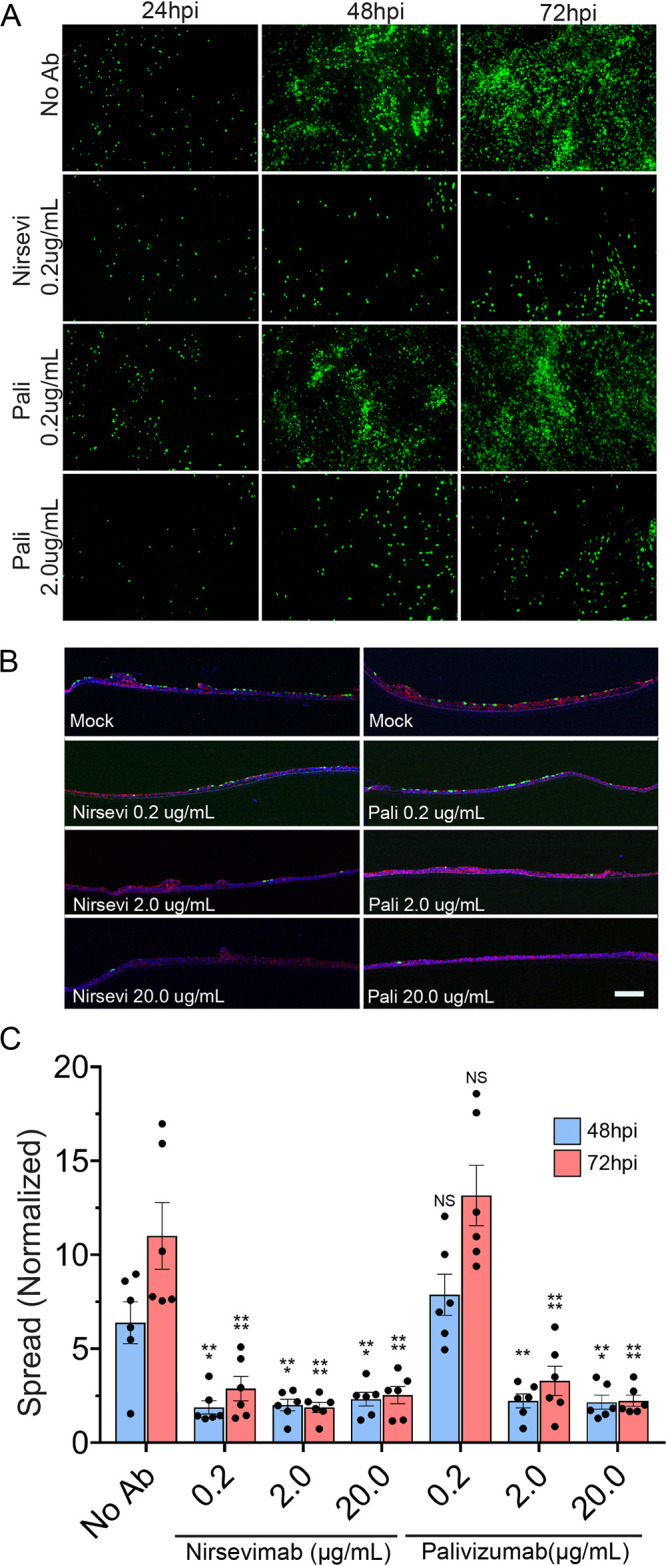FIG 7.

Nirsevimab inhibits spread significantly more potently than palivizumab. (A) HAE tissues were infected with rgRSV at MOI of 0.3. Tissues were treated apically with either palivizumab or nirsevimab 6 hours postinoculation in 50 μl of TEER buffer. Fluorescence microscopy images were taken up to 72 hours postinfection. (B) Tissues were fixed at 72 hpi and microtome-sectioned for each treatment group and examined for viral spread. (C) Fluorescence threshold analyses of inverted fluorescence microscopy images demonstrate that both pali and nirsevi are able to prevent the spread of rgRSV in HAE-infected tissues, with nirsevi able to inhibit spread at lower concentrations than pali. Scale bar = 10 μm. Error bars represent SEM of 6 tissues per treatment group. Statistical significance is represented with P < 0.05 (*), P < 0.005 (**), P < 0.0005 (***), and P < 0.0001 (****).
